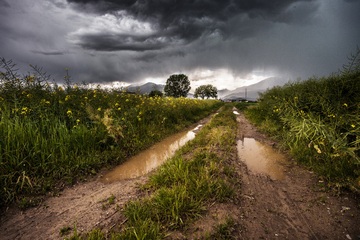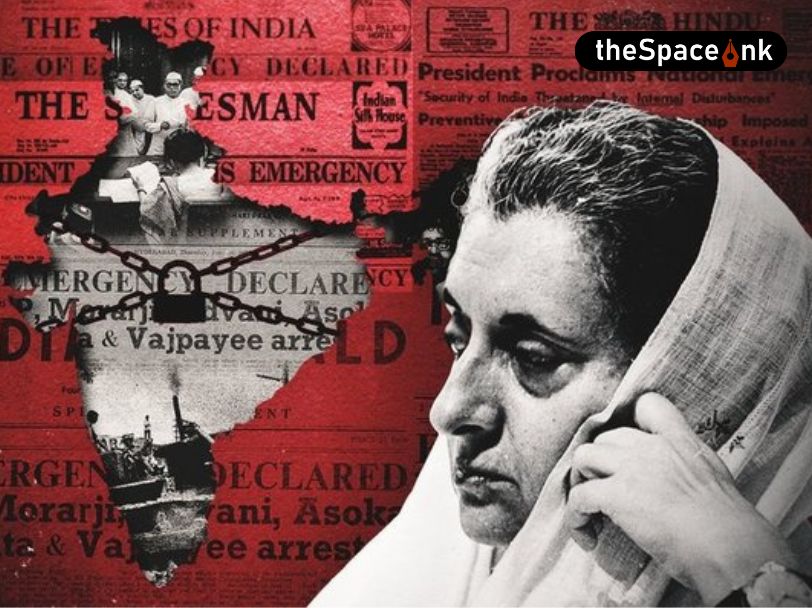Rains evoke a range of emotions in humans. For a pluviophile who loves the rain, just watching raindrops dance upon the pavement, slide off leaves and sing on rooftops, is a blissful experience. Some credit the rains for a spurt in their creativity, while others just watch the rain from their window, sipping their favourite brew, and brood. Before you brush these off as whimsical mood-swings, there is scientific evidence to prove that rain and human behaviour have a connection.
For instance, the rhythmic pitter-patter of falling rain is likened to ‘pink noise’, and found to relax the brain and aid deep sleep. And rain-induced hunger pangs are not imaginary either. Your craving for carbohydrates could be attributed to the decrease in serotonin hormone due to rains cutting the sunlight off. But the effect rain has on human behaviour goes far beyond just altering moods, inducing peaceful sleep and cravings for spicy, deep-fried food, and steaming hot beverages.
In the past it wasn’t uncommon for military leaders to believe there was a relationship between blasts from weaponry and rainfall. And although the theory has inconclusive evidence, even the great Napoleon thought rain and storms could result from blasts of artillery and heavy guns. Perhaps this is why Charles B. Farwell, a senator of Illinois in 1890 was in favour of bombing the skies when he suggested rain-concussion trails. However James Pollard Espy, the first official meteorologist of the United States believed it wasn’t the blasts, but the warm, humid air that generated rainfall. His quirky idea was to set up a timber farm stretching along the Western frontier of the United States which could be set ablaze to cause rain whenever needed.

This love-hate relationship of humans with rain go back many, many years and are an integral part of our culture and mythology and represents our ancient understanding of natural forces. Author Cynthia Barett has examined some intriguing ancient beliefs in her book titled, Rain: A Natural and Cultural History. By nature humans have always attributed the unknown to
superstition and in the absence of scientific reason and explanation, rain too was believed to be a curse of the witches or a blessing of gods. One of the earliest theories goes back to 1589, when Scotland’s king, James VI blamed witches for creating the storms that prevented Anne of Denmark, his bride from reaching him. And the fear of rain among the Judeo-Christian can be traced back to the forty days and nights of deluge Noah suffered that almost destroyed all living creatures on earth and resulted in rain being regarded as God’s way of punishing mankind.
One’s geographical location too has a huge impact on how people perceive rain and the reason behind weather modification rituals. The ‘rain dance’ is predominantly performed by people of arid regions, like the Native American Pueblo people, tribes of Sahara Desert and Ethiopia and the Aborigines of Australian from the Great Sandy Desert. And in Anasazi culture, of the Native American people who belong to arid high-desert regions of the United States, rain is regarded as a gift from God, a blessing of the natural world and regarded sacred.
History has shown that humans have an innate affinity to want to play God. Soon the belief that rain can be made to fall gathered momentum, and this gave us the ‘rainmaker’, a person who is believed can bring rain. Much like the Gods, rainmakers were considered sacred and were highly revered among many indigenous tribes across the world for their power to control nature and their ability to break the curse of drought and famines. The rainmaking ceremonies of these rainmakers involve prayers and sacred objects which they use to connect to the natural weather forces, like wind, thunder, clouds and lightning.
Most of these ceremonies have a connection with natural elements. For instance, amphibians are active around monsoon season during which they seek a mate, so in parts of India, it was fitting to marry frogs that were believed would invoke rain. Sacrificial rain ceremonies by Wu Shamans of China involve dancing inside a ring of fire, with beads of perspiration symbolizing raindrops, much like Thailand’s ancient belief that teardrops of the female cat could result in rainfall. Igbo people burn sacred herbs and use broomsticks, and Baroka and Lubedus tribes of South Africa, summon the rain using a magical horn. While Pedi and Tswana offer sacrifices of corn and beer to appease the spirits and bring rainfall.
With the world fascinated with the rain, it doesn’t come as a surprise that rain has been romanced in literature and is often used to symbolize trials of life, ominous foreboding and a time of introspection.
The reason rain is seen as a sign of doom comes from the physical elements that accompany this natural phenomena, like thunder and lightning, floods, winds and storms and the disaster and devastation. One is instantly reminded of Feste’s song from Twelfth Night, by William Shakespeare where wind and rain represent life’s hardships and Henry Wadsworth Longfellow’s poem, The Rainy Day which depicts the rainy weather as depressing and melancholic. In his short story The Long Rain, American writer Ray Bradbury describes the rain on planet Venus like few others could have imagined, and writes, “It was a hard rain, a perpetual rain, a sweating and steaming rain; a mizzle, a downpour, a fountain, a whipping at the eyes, an undertow at the ankles…”
We all perceive the rains differently, through the spell it casts upon our soul over the years. Our mood when it rains is largely a reflection of the rain’s intimate touch. And whether it’s liberating, life-changing, pleasant or damning, life is all about feeling the rain!
Image courtesy: Pxhere
Lesley D. Biswas is a freelance writer and children’s author based in Kolkata. Her interests include nature, bird photography and cricket.







